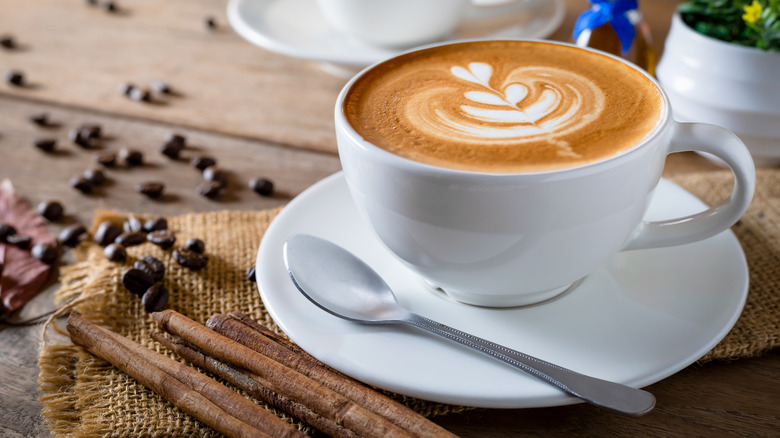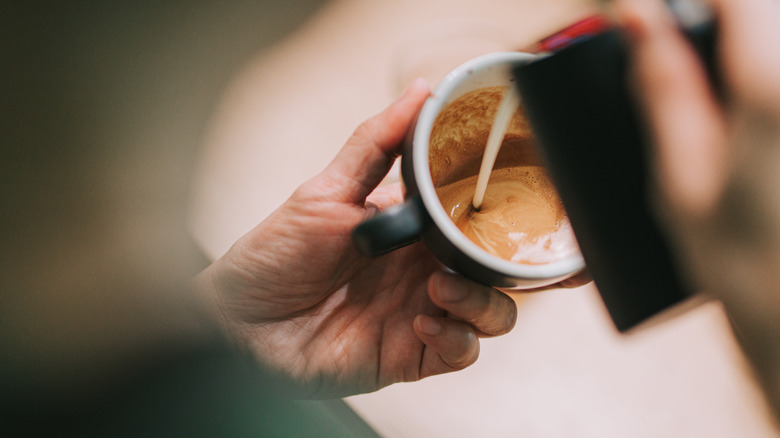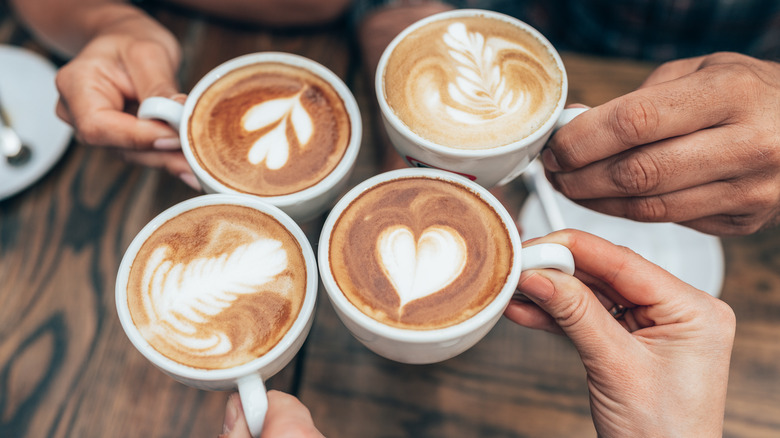The Exact Difference Between A Cappuccino And A Latte
Defining what sets apart a cappuccino from a latte can stump even the most hardcore coffee lovers. These hot drinks not only share roots in Italian café culture, but both incorporate espresso shots, steamed milk, and foam — largely the same ingredients. However, there are key differences between the two beverages that baristas apply when making each one, and it primarily comes down to how the milk is added.
Cappuccinos typically use a much smaller amount of milk that is super foamy and layered on top of the espresso. This results in the rich, bold notes of coffee standing out more prominently as well as a bit more texture. Lattes, on the other hand, use larger quantities of steamed milk that's mixed into the espresso. This creates a milder coffee taste, and over time the flavor of the coffee has become even more disguised in Starbucks' signature flavored lattes.
The differences also impact the serving size of both drinks, with lattes generally being served in larger cups to accommodate the extra milk.
Milk foam also sets cappuccinos apart from lattes
Cappuccinos are all about layers, centering around the use of milk foam more than just straight steamed milk. When baristas begin to pour the small amount of milk needed for this drink, they typically hold back the milk foam through a large spoon. They then ladle in the foam carefully, resulting in a distinct layer of bubbles on top. Dry cappuccinos contain more foam than milk, which makes the espresso stand out more and is ideal for coffee lovers that prefer the strong taste.
Lattes are not as fussy by comparison, as their recipe just calls for straight steamed milk to be directly added to the espresso. This results in a smoother, milkier drink that is more homogenous by design, which means you likely won't get those separate layers of coffee, milk, and froth found in cappuccinos. That doesn't mean these drinks don't stand out visually, as latte art allows for intricate designs. Just keep in mind that making your own latte art requires a bit of practice and technique.
Lattes are a more modern drink than cappuccinos
Italians have enjoyed cappuccinos as far back as the 1600s, with the name of the beverage likely referencing the haircuts of Capuchin friars at the time. These priests set themselves apart by shaving the tops of their heads, sparing a ring of hair at the bottom. This distinct layer of dark hair over a white scalp chromatically resembles the color palette of espresso under milk foam.
Lattes, on the other hand, were first documented in 1867, and it took almost a century for them to popularize. Lino Meiorin, a Berkeley coffee shop owner, brought more fame to the drink by marketing it as a larger, less in-your-face version of the cappuccino halfway into the 20th century.
One thing lattes do share with cappuccinos, however, is that Italians see both these drinks as morning treats. But now, with both being on café menus across the world throughout the day, people follow that custom less closely.



